What Is Kratky Hydroponics And Should You Use It?
I get commissions for purchases made through links in this post. View our Affiliate Disclaimer.
There are various types of hydroponic systems, each with its own advantages and disadvantages. One of these systems is Kratky Hydroponics, which is popular due to its simplicity and low-maintenance requirements. What is Kratky hydroponics, and how does it work?
Kratky is a basic passive hydroponic system used to grow plants with shallow root systems on a small to medium scale. The plants are suspended above the nutrient solution with the roots in the solution and an air gap between the solution and the base of the plant to provide oxygen to the roots.
We will explore what Kratky Hydroponics is, how it works, its benefits, suitable plants for this system, and tips for successful implementation. Our guide to Kratky hydroponics will get you started using this simple, low-cost hydroponic system and teach you the basics of soil-less growing.
What Is The Kratky Method Of Hydroponics?
Kratky Hydroponics is a passive hydroponic system named after its inventor, Dr. B.A. Kratky, a professor at the University of Hawaii. It is a non-circulating hydroponic system that does not require any electricity, pumps, or timers.
The system consists of a container filled with a nutrient solution, a net pot that holds the plant, and a growing medium, such as perlite or coconut coir. The plant’s roots dangle in the nutrient solution, which is gradually depleted as the plant grows and uses up the nutrients.
Kratky Hydroponics differs from other hydroponic systems, such as ebb and flow or drip irrigation, in that it requires no active pumping or water circulation. Instead, the plant relies on the principle of passive hydroponics, where the roots grow into the nutrient solution and create an oxygen-rich environment.
The Deep Water Culture or DWC hydroponics system is very similar to Kratky hydroponics and works in a similar way to the Kratky system.
The oxygen is supplied by the air space that forms between the top of the nutrient solution and the bottom of the net pot. As the plant grows, the air space gradually decreases, allowing the roots to become exposed to the atmosphere, which encourages root growth and development.
Kratky Hydroponics is a simple and cost-effective method of growing plants, making it ideal for small-scale and home-based farming. It requires minimal maintenance and is an excellent option for those growers new to hydroponics. The lack of pumps and electricity also makes it a more sustainable option, reducing energy consumption and environmental impact.
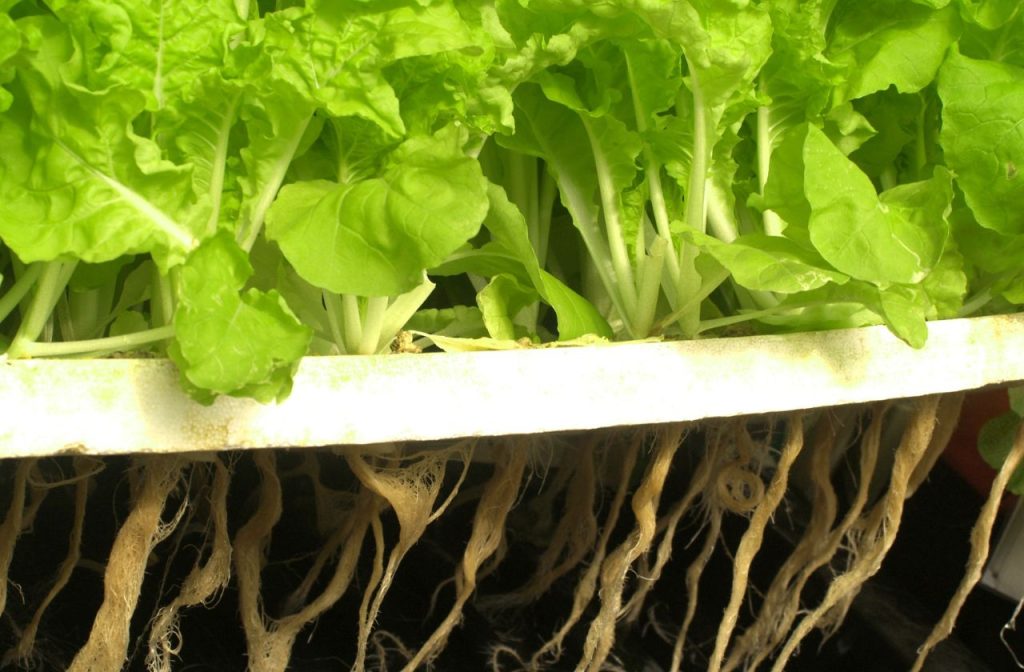
How Does Kratky Hydroponics Work?
Kratky Hydroponics is a passive hydroponic system that works on the principle of creating an oxygen-rich environment for the plant’s roots.
The system is made up of a container, a net pot, and a nutrient solution. The plant’s roots are partially suspended in the nutrient solution, which gradually depletes as the plant grows and uses up the nutrients.
The container is filled with a nutrient solution to a depth that leaves an air space between the top of the solution and the bottom of the net pot.
This air space is essential to provide oxygen to the roots, which allows them to grow and develop. As the plant grows, the air space increases, and the roots become exposed to the atmosphere.
This exposure to the air encourages the roots to grow further, creating a larger root system, allowing the plant to absorb more nutrients.
The nutrient solution is not actively circulated; rather, the plant uptakes the solution through its roots in the amount it needs in its present growing cycle.
Kratky Hydroponics is a low-maintenance system that does not require electricity or pumps. It is suitable for growing a wide range of crops, including leafy greens, herbs, and fruiting plants.
The system can be set up in various sizes, making it ideal for small and medium-scale vegetable growing.
Advantages Of Kratky Hydroponics
Kratky Hydroponics offers several advantages over traditional soil-based farming and other hydroponic systems.
- Cost-effective. Kratky Hydroponics is a low-cost system that does not require electricity, pumps, or timers. It is also possible to reuse the growing medium and nutrient solution, making it a more affordable option in the long run.
- Low-maintenance. Since Kratky Hydroponics does not require electricity or pumps, it is low-maintenance and does not require daily monitoring. The only requirement is to keep an eye on the nutrient solution level and top it up as needed.
- Water-efficient. Kratky hydroponics uses less water compared to traditional soil-based farming since the water is contained and reused in the system. This makesthe Kratky method an ideal option for areas with limited water resources.
- Suitable for small-scale and home-based growing. Kratky Hydroponics is a great option for those with limited space or who want to grow their produce at home. It is also an ideal option for community gardens and urban farming projects.
- No electricity or pumps are required. Kratky Hydroponics is a sustainable option that does not require electricity or pumps, reducing energy consumption and environmental impact.
In addition to these benefits, Kratky Hydroponics also offers higher yields, faster growth rates, and more efficient use of resources than soil-based growing. It is also a more controlled environment, reducing the risk of pests and diseases.
Disadvantages Of Kratky Hydroponics
While Kratky Hydroponics has several advantages, especially as a low-cost, low-technology form of hydroponics, it also has some limitations.
- Limited plant variety. Kratky Hydroponics is not suitable for growing large plants with deep root systems. Plants such as corn or fruit trees are not recommended for this system.
- Limited nutrient control. Since the nutrient solution is not recirculated, it can become depleted quickly, leading to nutrient deficiencies. This can limit the variety of crops that can be grown in this system.
- Risk of root rot. Kratky Hydroponics relies on the air gap between the net pot and nutrient solution to provide oxygen to the roots. If the air gap is not maintained, it can lead to root rot.
- Limited scalability. Kratky Hydroponics is not suitable for large-scale commercial farming since it requires individual containers for each plant.
- Limited control over growing conditions. Since Kratky Hydroponics does not use pumps or electricity, there is limited control over growing conditions such as temperature and humidity.
While Kratky Hydroponics is a simple and cost-effective way to grow plants, it has some limitations that may not make it ideal for all types of plants or growing conditions. Understanding these limitations is important when considering whether Kratky Hydroponics is the right choice for your food-growing needs.
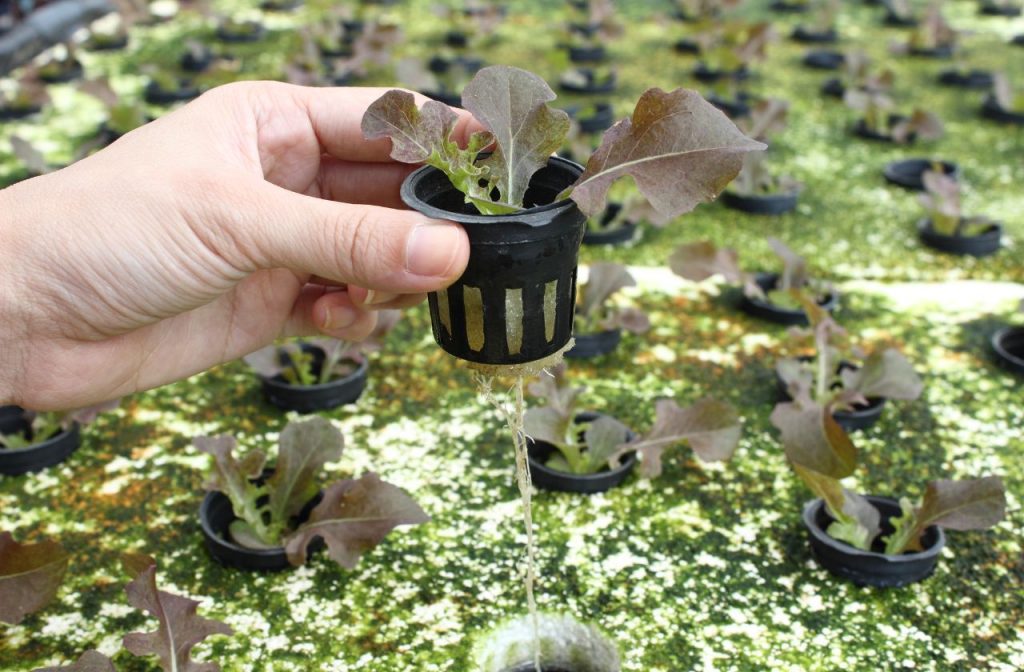
Plants Suitable For Kratky Hydroponics
Kratky Hydroponics is suitable for growing a wide variety of crops, including leafy greens, herbs, and fruiting plants.
We have created a list of the most common plants grown in this system and the plants most suitable for Kratky hydroponics.
- Leafy greens. Spinach, lettuce, kale, and arugula are excellent choices for Kratky Hydroponics. These plants have shallow roots and are easy to grow.
- Herbs. Basil, parsley, cilantro, and mint are popular herbs that thrive in Kratky Hydroponics. They grow quickly and are easy to maintain.
- Fruiting plants. Tomatoes, peppers, and cucumbers can also be grown in Kratky Hydroponics. However, they require more nutrients and a larger container compared to leafy greens and herbs.
- Microgreens. Microgreens are an excellent choice for Kratky Hydroponics since they require a small container and grow quickly. They are also highly nutritious and can be harvested in as little as two weeks.
- Flowers. Certain flowers, such as marigolds, petunias, and pansies, can also be grown in Kratky Hydroponics. They are ideal for adding color and fragrance to your indoor or outdoor space.
Plants with shallow roots and short growth cycles are ideal for Kratky Hydroponics. However, with proper planning and care, growing a wide range of crops in this system is possible.
Can You Do Kratky Hydroponics In A Mason Jar?
Kratky hydroponics is a hydroponics method that doesn’t require a lot of equipment or space. It’s a great option for people who want to grow plants without having to invest in a lot of expensive gear. One of the great things about Kratky hydroponics is that you can do it in a mason jar! All you need is a jar, some water, and some plants.
If you’re interested in trying Kratky hydroponics, here’s a quick guide on how to do it in a mason jar. First, you’ll need to choose the right size jar for your plants. A 1-quart jar should be sufficient for most plants. Next, add enough water to the jar so that the roots of your plants will be submerged. Then, add your plants and seal the jar.
The plant will get the water and nutrients it needs from the water in the jar. You may need to top up the nutrient solution in the jar as time goes on, but other than that, there’s not much else you need to do. Check on your plants every few days to make sure they’re doing okay, and soon you’ll have a thriving plant in a mason jar!
Components Of A Kratky Hydropnics System
A Kratky hydroponic system is one of the easiest hydroponic systems to set up, and most of the components are probably already present in your home.
- Container. A container is used to hold the nutrient solution and the plant. It can be made of plastic, glass, or any other non-toxic material. Mason jars are a common container used for Kratky hydroponics.
- Net pot. A net pot is placed in the container’s lid to hold the plant and its growing medium. It has holes that allow the plant roots to grow through and into the nutrient solution. Net pots are inexpensive and can be sourced online or at your local hydroponics store or garden center.
- Growing medium. A lightweight and porous growing medium such as perlite or coconut coir is used to allow for good drainage and air circulation.
- Nutrient solution. A nutrient solution is used to provide the plant with essential minerals and nutrients for growth. A well-balanced NPK hydroponic nutrient solution is recommended and must be mixed according to the manufacturer’s instructions and added to the container.
- Air gap. An air gap is created between the bottom of the net pot and the surface of the nutrient solution. This allows the plant roots to absorb oxygen from the air and prevents them from drowning in the solution.
- A lid for the container. A lid or cover is used to prevent evaporation of the nutrient solution, support the net pot, and keep the growing environment clean.
If your container is clear or translucent, use dark cardboard or paper to create a sleeve to surround the container and keep light penetration to a minimum to avoid algae growth in the nutrient solution.
What Nutrients Do You Use For Kratky Hydroponics?
One of the great things about Kratky hydroponics is that you can use nearly any type of nutrient solution. However, there are a few things to remember when choosing a nutrient solution for your Kratky system.
Kratky hydroponic nutrients must be well-balanced. This means it should contain all the essential nutrients plants need to thrive. Making your own DIY nutrient solution at home is possible, but I recommend beginners start with a commercial hydroponic nutrient solution.
You must ensure the nutrient solution is properly diluted. If the nutrient solution is too concentrated, it can actually harm the plants. On the other hand, if the solution is too dilute, the plants won’t get all the nutrients they need.
The pH of the nutrient solution is another crucial metric to get right for hydroponic growing. The ideal pH for most plants is around 6.5-7.0. If the pH of your solution is too high or too low, it can cause problems for the plants.
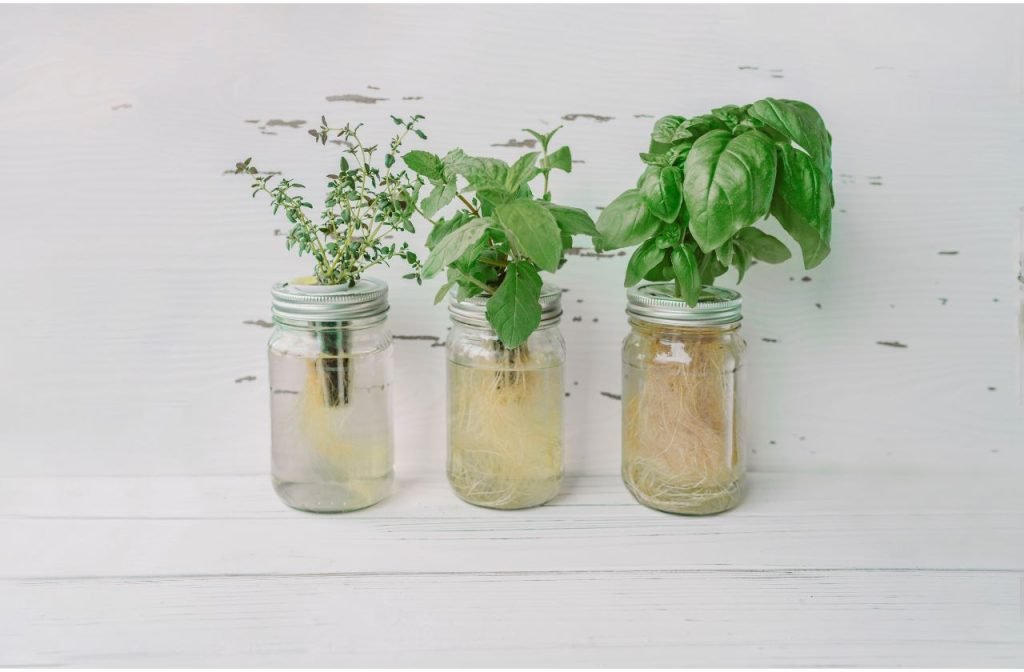
Tips For Successful Kratky Hydroponics
The following tips will be helpful in achieving success with your first attempt at exploring growing plants with the Kratky hydroponic system.
- Choose the right container. Choose a growing container large enough to accommodate the plant’s roots and has a lid or cover to prevent evaporation.
- Use the right growing medium. Use a lightweight and porous growing medium such as perlite or coconut coir to allow for good drainage and air circulation.
- Mix the nutrient solution correctly. Follow the manufacturer’s instructions to mix the nutrient solution correctly. Monitor the pH level and adjust it as needed.
- Ensure adequate sunlight. Place your Kratky Hydroponics system in a location that receives adequate sunlight or artificial light.
- Monitor the nutrient solution level. Check the nutrient solution level regularly and top it up as needed. Ensure that the air gap between the net pot and nutrient solution is maintained.
- Harvest regularly. Harvest leafy greens and herbs regularly to encourage new growth and prevent overcrowding.
- Cover the container to prevent algae growth. If you use a glass or translucent container, you should cover the sides of the container with a black paper or cardboard sleeve to limit the amount of light entering the container. This prevents algae growth in the nutrient solution. Algae growth is not dangerous, but it is unsightly and uses the nutrients intended for your plant.
These tips can help you maximize the yield and growth of your Kratky Hydroponics system.
Conclusion
Kratky Hydroponics is a popular, low-cost method of hydroponic growing that is easy to set up and requires minimal maintenance. This system allows plants to grow in a nutrient-rich solution without needing electricity or pumps, making it an ideal choice for beginner hydroponic gardeners or those on a budget.
Kratky Hydroponics has many advantages, including water conservation, reduced use of fertilizers and pesticides, and ease of maintenance. However, it also has some limitations, such as limited control over growing conditions, limited nutrient control, and limited scalability.
Get more posts like this
Subscribe to our mailing list and get interesting homesteading and green living info and updates to your email inbox.
Thank you for subscribing.
Something went wrong.

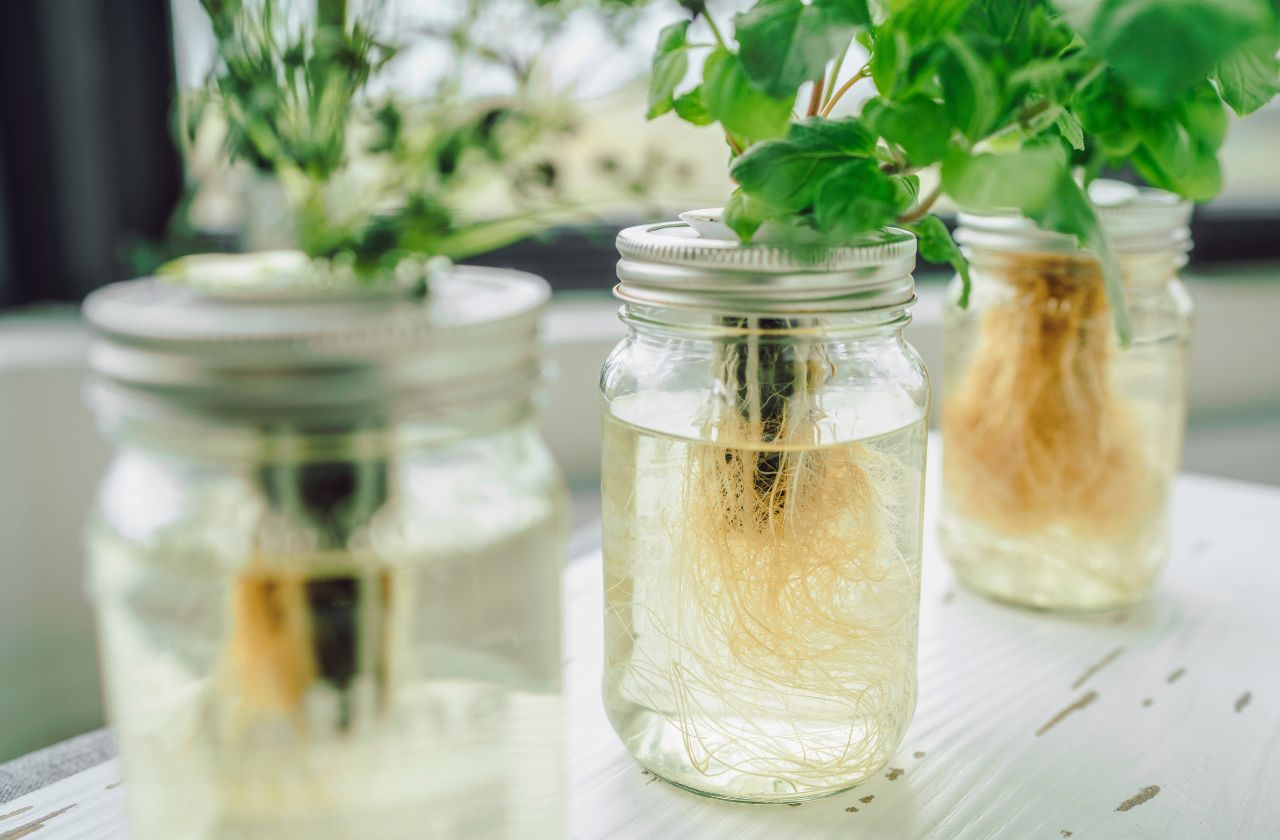


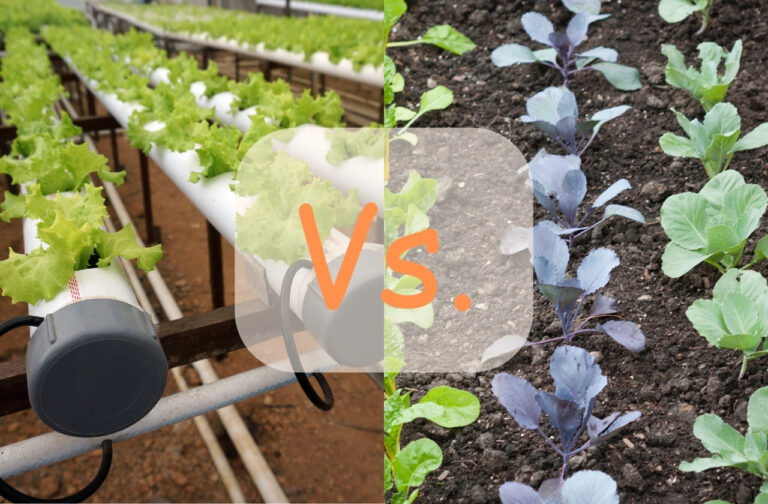
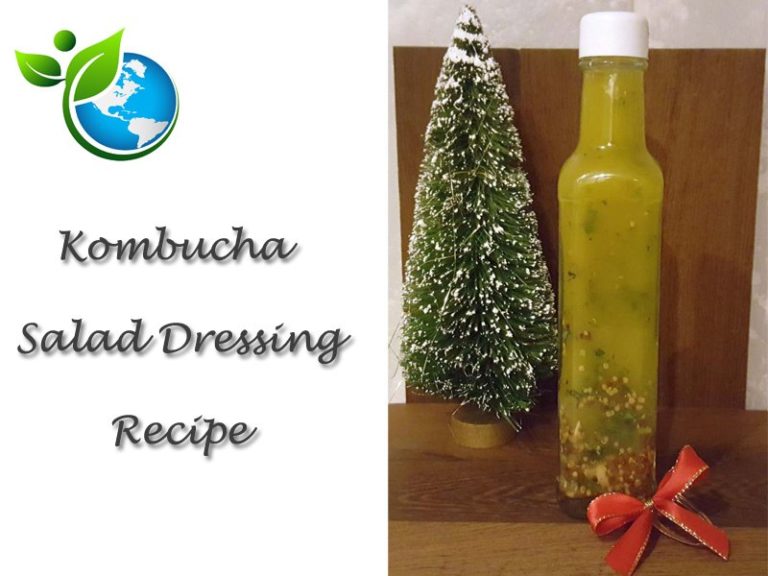

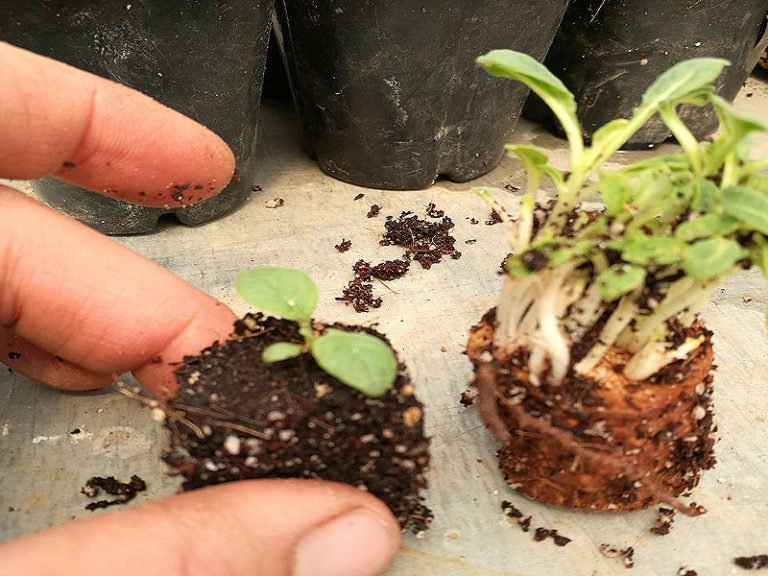
Cool method of growing. I know people who have used it and did well. It is something I will be looking into in the future.
Hi Ann, Thanks for leaving a comment. I use hydroponics as part of my strategy to grow my own food. I would be interested in hearing about your experience if you try this hydroponic growing method!
I grabbed a sucker off one of my Roma plants in the garden. I should probably start with leafy greens, but it’s been in an amber bottle for a couple of days and has started getting a root system. I’m going for it. I have to grab all the rest of the supplies needed. Do you think a quart mason jar is big enough or should I go up to a half gallon for a tomato? I have both on hand.
Hi Anne, thanks for reaching out to us! Great job on trying out Kratky hydroponics! Tomatoes grow into fairly large plants, even smaller varieties can become a little top heavy, especially when they begin to fruit. I would suggest opting for the larger half-gallon jar for tomatoes.
Thanks I’ll let you know if it works.